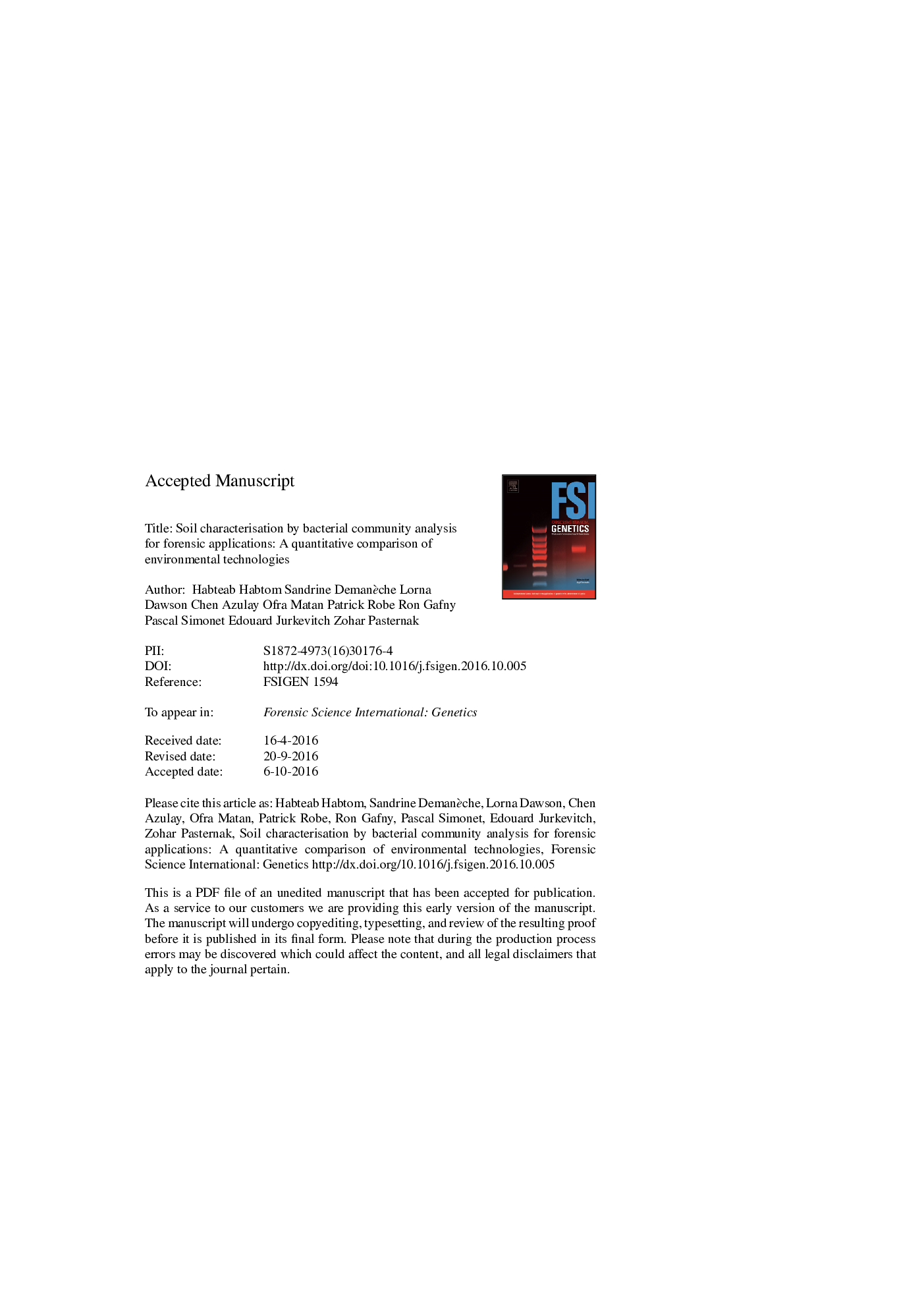| کد مقاله | کد نشریه | سال انتشار | مقاله انگلیسی | نسخه تمام متن |
|---|---|---|---|---|
| 4760401 | 1422152 | 2017 | 32 صفحه PDF | دانلود رایگان |
عنوان انگلیسی مقاله ISI
Soil characterisation by bacterial community analysis for forensic applications: A quantitative comparison of environmental technologies
ترجمه فارسی عنوان
ویژگی های خاک با تجزیه و تحلیل جامعه باکتری برای کاربرد های قانونی: مقایسه کمی از فن آوری های زیست محیطی
دانلود مقاله + سفارش ترجمه
دانلود مقاله ISI انگلیسی
رایگان برای ایرانیان
کلمات کلیدی
موضوعات مرتبط
علوم زیستی و بیوفناوری
بیوشیمی، ژنتیک و زیست شناسی مولکولی
ژنتیک
چکیده انگلیسی
The ubiquity and transferability of soil makes it a resource for the forensic investigator, as it can provide a link between agents and scenes. However, the information contained in soils, such as chemical compounds, physical particles or biological entities, is seldom used in forensic investigations; due mainly to the associated costs, lack of available expertise, and the lack of soil databases. The microbial DNA in soil is relatively easy to access and analyse, having thus the potential to provide a powerful means for discriminating soil samples or linking them to a common origin. We compared the effectiveness and reliability of multiple methods and genes for bacterial characterisation in the differentiation of soil samples: ribosomal intergenic spacer analysis (RISA), terminal restriction fragment length polymorphism (TRFLP) of the rpoB gene, and five methods using the 16S rRNA gene: phylogenetic microarrays, TRFLP, and high throughput sequencing with Roche 454, Illumina MiSeq and IonTorrent PGM platforms. All these methods were also compared to long-chain hydrocarbons (n-alkanes) and fatty alcohol profiling of the same soil samples. RISA, 16S TRFLP and MiSeq performed best, reliably and significantly discriminating between adjacent, similar soil types. As TRFLP employs the same capillary electrophoresis equipment and procedures used to analyse human DNA, it is readily available for use in most forensic laboratories. TRFLP was optimized for forensic usage in five parameters: choice of primer pair, fluorescent tagging, concentrating DNA after digestion, number of PCR amplifications per sample and number of capillary electrophoresis runs per PCR amplification. This study shows that molecular microbial ecology methodologies are robust in discriminating between soil samples, illustrating their potential usage as an evaluative forensic tool.
ناشر
Database: Elsevier - ScienceDirect (ساینس دایرکت)
Journal: Forensic Science International: Genetics - Volume 26, January 2017, Pages 21-29
Journal: Forensic Science International: Genetics - Volume 26, January 2017, Pages 21-29
نویسندگان
Habteab Habtom, Sandrine Demanèche, Lorna Dawson, Chen Azulay, Ofra Matan, Patrick Robe, Ron Gafny, Pascal Simonet, Edouard Jurkevitch, Zohar Pasternak,
